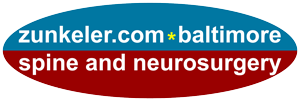The term coccygodynia describes a painful sensation in the area of the tailbone (coccyx). This is a condition, which is relatively uncommon in men in the absence of trauma. The condition is more common in women, possibly due to the greater prominence of the coccyx in women. The term “coccygodynia” describes only a symptom (i.e. pain in the coccyx region), while the underlying cause of the pain (i.e. a definitive diagnosis) is sometimes not discovered.
The 19th century drawing from Gray’s Anatomy textbook shows the sacrum and coccyx are shown in the approximate position of a person sitting in a recliner chair (semi-recumbent). As the drawing shows, that position, similar to lying down flat, takes some pressure off the coccyx, which is located at the bottom end of the human spine and is roughly triangular in shape, consisting of 3-5 segments, the largest of which connects with the lower end of the sacrum. Like in any segment of the spine, degeneration of the coccygeal vertebrae and discs may arise without a clear-cut traumatic event.
Causes of tailbone pain (coccygodynia)
- The most common cause for coccygodynia is thought to be direct, high-impact trauma from falls (about 50% of cases).
- Prolonged, awkward positioning, especially sitting (i.e. before, during and after childbirth), a highly sedentary lifestyle, i.e. “television disease, ” and other forms of relatively low-impact repetitive trauma to the sacrum (i.e. rowing machine use, prolonged bicycle riding, etc.) is thought to be the cause for a number of the remaining cases.
- In many individuals with coccygodynia, no clear cause for the condition can be identified. In those cases, further investigations (i.e. with X-rays, CT, MRI etc.) should be performed, to rule out other pathology, especially tumors of the pelvis and the pelvic floor, i.e. chordoma, giant cell tumor, schwannoma, intra-osseus lipoma, carcinoma of the rectum or sacral hemangioma, etc.. Occasionally, perineural cysts of the lower sacral nerves may also cause coccygeal pain.
Other, more controversial causes for coccygodynia include:
- Spinal disease, including herniated lumbar discs and arachnoiditis.
- Pelvic disease, including peri-rectal abscess or fistula, pilonidal cyst or plevic inflammatory disease.
Initial treatment:
Coccygodynia usually resolves within the first three months with conservative management, consisting of nonsteroidal antiinflammatory drugs as tolerated and lifestyle adjustments, including avoidance of the sitting position, weight loss in obese individuals to lessen the load on the coccyx. Some patients benefit from a trial of a doughnut pillow, which unloads the coccyx while sitting.
About 20% of patients experience a recurrence of coccygodynia in the first year.
More invasive treatment options:
Patients who fail treatment with conservative treatment may benefit from steroid injections to the sacrum.
- Intra-rectal massage and manipulations of the levator ani muscle and sacrum, sometimes done under anesthesia can also help alleviate pain.
- Steroid injections (caudal epidural blocks), destructive injection techniques (neurolysis) of sacral nerve roots, thermal lesioning (pulse radiofrequency treatment) of the “ganglion impar” have been described but there is limited information on the efficacy of those techniques.
- Coccygectomy, resection of all or part the coccyx has a success rate of 70-90% in well selected cases and remains the treatment of last resort since most cases respond well to other forms of treatment.
Literature
- For a recent review of the treatment options for coccygodynia, see: Elkhashab, Y., Ng, A. A Review of Current Treatment Options for Coccygodynia. Curr Pain Headache Rep 22, 28 (2018). https://doi-org.proxy1.library.jhu.edu/10.1007/s11916-018-0683-7
- The anatomical drawing is from: Gray, Henry; Carter, Henry Vandyke (1858), Anatomy Descriptive and Surgical, London: John W. Parker and Son
OFFICE HOURS
| Monday – Friday | 8:30 – 4:30 |
| Saturday | closed |
| Sunday | closed |

